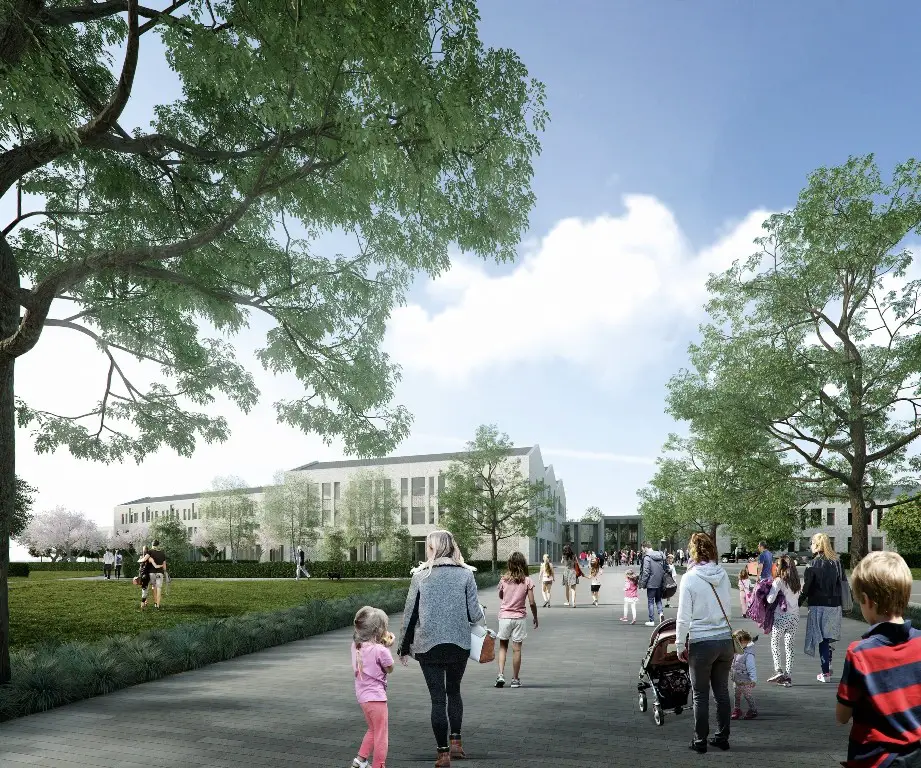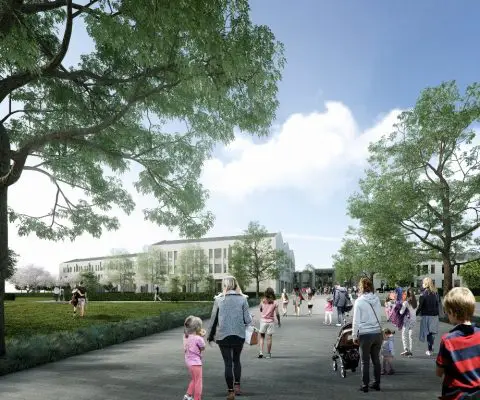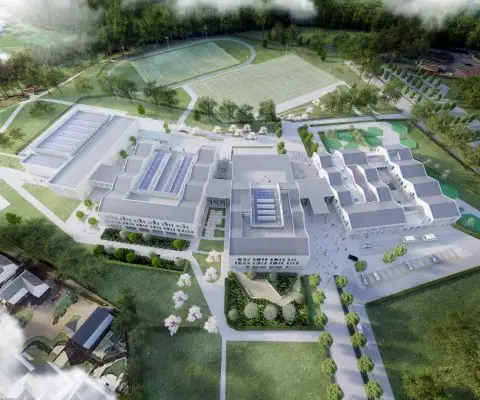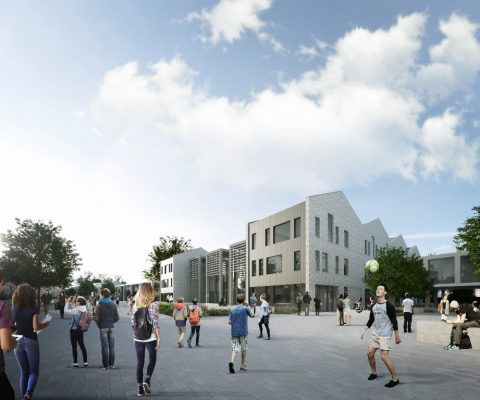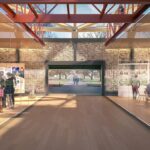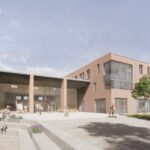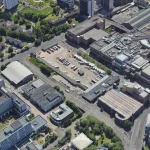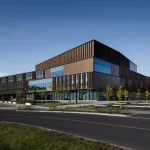Knockroon School East Ayrshire buildings, Scotland educational facility images, Scottish architecture
Knockroon School in East Ayrshire
Learning and Enterprise Campus. New Teaching Building in Scotland, UK design by Sheppard Robson Architects.
post updated 3 July 2025
Architects: Sheppard Robson
Location: East Ayrshire, Scotland
Sheppard Robson submits plans for 2,500-pupil school campus in East Ayrshire, Scotland
31 Jan 2017
Knockroon School Building
Sheppard Robson has submitted plans to East Ayrshire Council for the 23,000m2 Knockroon Learning and Enterprise Campus, one of the most innovative and exciting school projects to be procured in Scotland in recent years.
The school will house 2,500 students and 300 staff. The student facilities include a secondary school (for 1,633 pupils), a primary school (517 pupils), a nursery (240 children), an 80-place supported learning centre and 30 additional places for students with special educational requirements.
Situated on a 19.8 hectare, urban fringe site – the school consolidates five disparate schools into one campus, creating a centre for education for the towns of Cumnock and neighbouring Auchinleck.
Rupert Goddard, partner at Sheppard Robson, said: “The designs are a result of extensive consultation with all stakeholders, including five head teachers, staff, pupils at all levels and the local community and stakeholders.
“It is this level of understanding that has allowed us to co-locate these schools, sharing resources amongst different age-groups as well as opening-up these facilities to the public, with an emphasis on creating sporting, enterprise and artistic resources for the community.”
The building has been conceived and organised as four linked structures, with three school pavilions and sports centre. Set on a radial geometry, the design approach helps to break down the overall mass of the building – which is formed of 2 two-storey and 2 three-storey structures – minimising the visual impact of the facility and giving each element of the school its own identity. Positioned within a parkland setting, the running track has been retained on site and upgraded, and public access has been maintained around the site and along the riverside.
The connected elements build upon innovative approaches to learning that the practice has developed over many years, including recent work with the Liverpool City Council. This approach creates an economic and adaptive shell into which different learning and social spaces can be configured. Each of the pavilions feature perimeter classrooms arranged around central atria which form “Learning Plazas.” The latter are dynamic gathering spaces that provide an environment for large group activities, social uses and flexible learning.
Externally the design of the building has been carefully considered to provide a development which is sympathetic to the largely residential context. The articulation of each block, through the pitched roof profile, helps to break down the mass of each pavilion further. Different punched window expressions helps to reinforce the individual use of each block, providing a subtle variation across the facades while maximising the use of standardised components. External spaces and surrounding infrastructure have also been carefully considered in terms of the parkland setting and existing landscape features, with accessibility and enhancement of provision being key considerations in terms of the developed scheme.
A significant proportion of the building’s energy is generated by onsite renewables, including photovoltaics positioned on the building’s roof and provision of bio-mass heating system. The positioning of the bio-mass heating system within the site allows the creation of a district heating network, and work is in development with neighbouring leisure facilities to enable connections.
A mixed-mode ventilation system allows the building to be naturally ventilated in summer and for the interior spaces to be efficiently heated through mechanical heat recovery in the winter. To complement the active sustainable design features, passive design strategies have also been incorporated, including a high-performance thermal envelope and naturally-lit central atria.
The project is anticipated to start on-site in summer 2017, with the building completing in time for the start of the 2019 academic school year.
Knockroon School – Building Information
Client: East Ayrshire Council
Architect: Sheppard Robson
Landscape Design: Rankin Fraser
M&E Engineer: W S P Parsons Brinckerhoff
Structural Engineer: W S P Parsons Brinckerhoff
Employers Agents: Faithful & Gould
Quantity Surveyors: Faithful & Gould
Planning Consultant: Nathaniel Lichfield & Partners
Heritage Consultant: Robert Potter and Partners
Consultation Specialist: Star Development Group
Knockroon School in East Ayrshire images / information received 310117
Sheppard Robson on e-architect
Location: East Ayrshire, Scotland.
Ayrshire Buildings
Ayrshire Building Developments
Queen Margaret Academy in Ayr
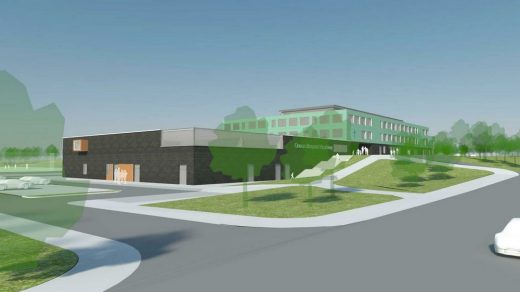
image courtesy of architects
Ayr Riverside Office Buildings, Southwest Scotland
Architects: Keppie Design ; Masterplan by Niall McLaughlin Architects
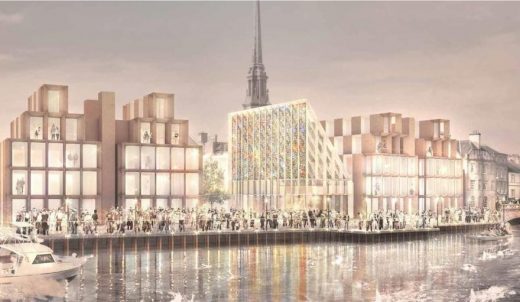
image courtesy of architects
Ayr Campus Building – University of the West of Scotland
The 18,000m2 UWS Ayr Campus is located on the Craigie Estate, next to the River Ayr.
Ardrossan Health Centre Building
Dalquharran Castle, Ayrshire, by Architect Robert Adam
Ardrossan Beach Pavilion Competition
Kilmarnock Building – Ayrshire Architecture
The Lighthouse, Glasgow
Knockroon Learning and Enterprise – East Ayrshire Council
Architecture in Scotland
New Scotland Architecture Designs – architectural selection below:
Scottish Architecture Designs – chronological list
Comments / photos for the Knockroon School in East Ayrshire design by Sheppard Robson Architects page welcome

